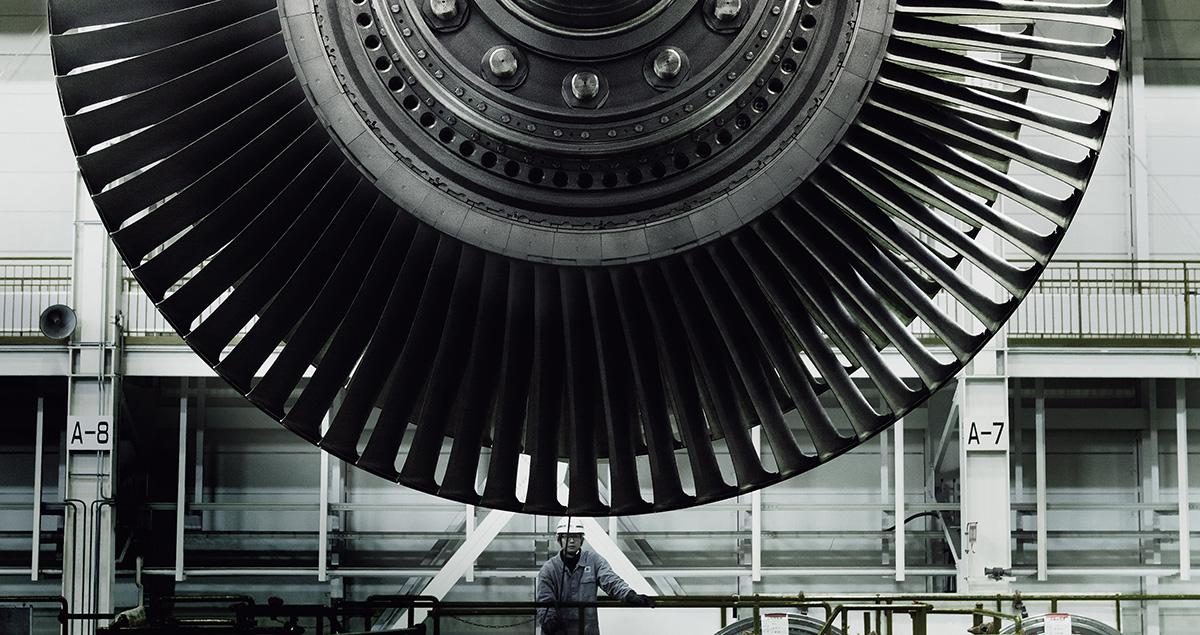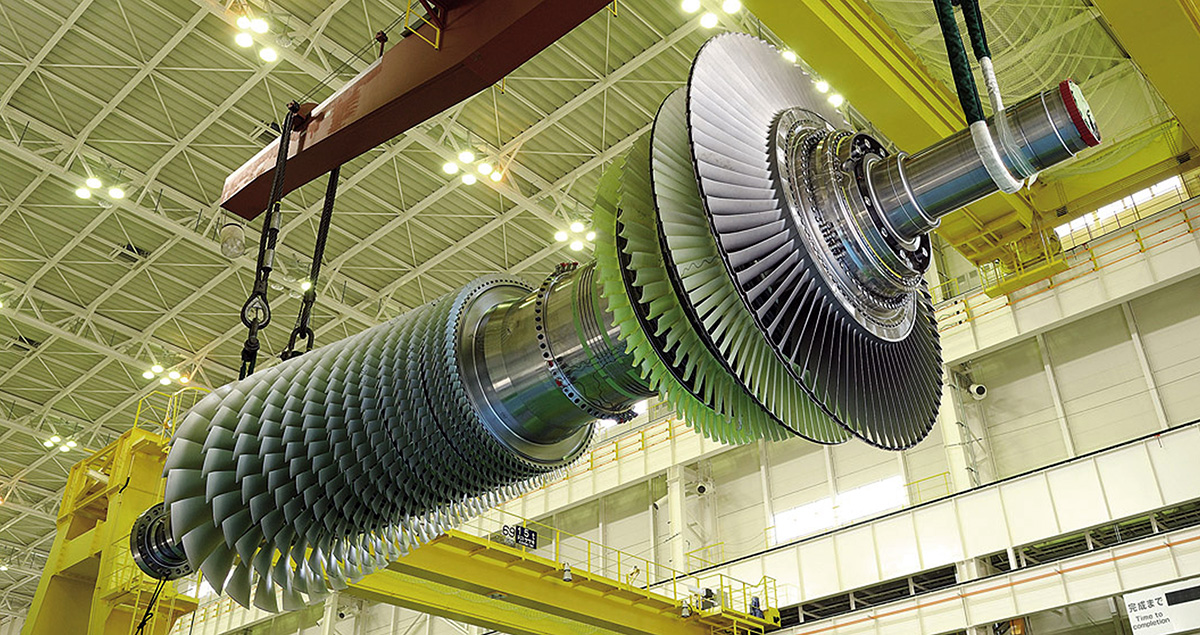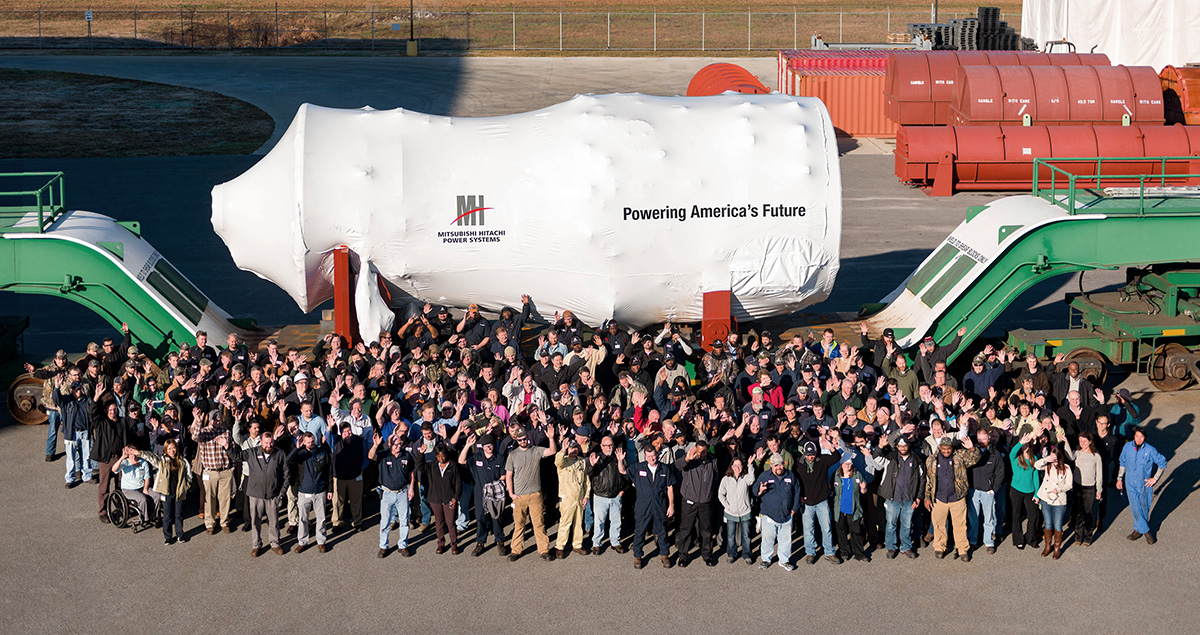Turbines back in the USA

Gas turbines, also known as combustion turbines, are mainstays of electricity generation in the United States, and will continue to be a reliable alternative even as renewable energy steadily gains in popularity. Westinghouse, which is no longer in the business, was for many years a driver of gas turbine technology development, until a decline in its fortunes required outsourcing of some of its manufacturing operations to Japan by Mitsubishi Heavy Industries (MHI), a long-time licensee of Westinghouse’s gas turbine engines.
In 1991 a major agreement between Westinghouse and MHI paved the way for manufacturing operations to return to the United States in the form of MHI’s entry into the U.S. market. The company is now the number one supplier of the largest gas turbines (over 250MW) in the United States.
For 25 years, Etsunori Miyazaki, a key negotiator of the deal, has held on to an unassuming fountain pen that represents one of the crowning achievements of his career in the energy business. The pen itself is nothing extraordinary, but Miyazaki attaches great sentimental value to it as a memento of several years of intense work at a time of great business opportunity fraught with high risk and uncertainty.
As dealmaker, Miyazaki’s challenge at the time was to ensure that his firm, MHI, would come out with access to technology and talent that would let the company establish a viable presence in the U.S. energy market, while laying the grounds for a mutually beneficial relationship with Westinghouse to continue refining steam and gas turbine technologies in order to remain competitive in the years to come.

The Rise, Fall, and Rise of Combustion Turbines
On one side of the pen is the inscription: WESTINGHOUSE / MHI. On the other is: C. T. ALLIANCE - 7/15/1991. On the 25th anniversary of the deal signing of the Combustion Turbine Alliance between Westinghouse and MHI, and from his perspective as a semi-retired Senior Advisor to the current parent company of the business—Mitsubishi Hitachi Power Systems, Ltd., or MHPS—Miyazaki reminisced about the ‘Tokyo-Orlando run,’ or the numerous flights he took to Orlando, Florida over a period of four years of negotiations leading up to the deal signing. “MHI had been a licensee of Westinghouse steam and combustion turbine technology since the 1960’s,” he said. “There was little room for improvement of steam technology, but gas, or combustion turbines held great promise since, through continued refinements they could be made more cost-effective to power companies, despite the high initial cost of installing the engine.”
Over a period of five decades, Westinghouse had seen its fortunes in gas turbines rise and fall. The company began developing them in the early 1940s, after being commissioned by the U.S. Navy Bureau of Aeronautics to develop the first US-designed jet engine. By the end of the decade Westinghouse was applying them to electric power generation for industrial use.
Gas turbines steadily became popular alternatives for public utilities. After the northeast power blackout of 1965, growth in the business accelerated through demand in the U.S. electric utility market for gas turbines, but in the 1970’s a steep decline occurred due to uncertainties over reliable access to fuel following the 1973 Arab Israeli war, the 1974 OPEC oil embargo, and then the U.S. Power Plant and Industrial Fuel Use Act of 1978. In the mid-1980’s, however, the stage was set for a strong recovery due to the rise of the cogeneration market under the Public Utility Regulatory Policy Act (PURPA), which was upheld by the US Supreme Court in 1984.
By then, however, Westinghouse was in need of financial support, which MHI could provide, while MHI was in need of a strategic alliance that would best position itself in the U.S. market prior to the coming boom. Unfettered access to Westinghouse’s proven gas turbine technology was also essential.

Enter the C. T. Alliance
When MHI’s Etsunori Miyazaki entered into negotiations with Westinghouse in the late 1980’s, Westinghouse had just moved its gas turbine business operations to Orlando, Florida from Concordville, Pennsylvania, and begun outsourcing the manufacturing of its popular W501D5 engines to MHI’s plant in Takasago, Japan. The relationship was further strengthened through the establishment of a joint development project of more advanced products, the 501F and 701F.
“Westinghouse was in a strong negotiating position because they knew the gas turbine market was slated to pick up over the next ten to twenty years, which is exactly what happened,” Miyazaki said. “Our biggest concern at the time was what would happen to us as a licensee in the event that Westinghouse should have financial difficulties and ever be sold to a competitor and its technologies transferred to that company.” The final deal, signed on July 15, 1991, was a cross-license agreement where joint development of new products would occur on an equal cost basis, while there were no restrictions on either company in terms of marketing, and no need to pay royalties. “MHI was then free to start manufacturing in the United States,” Miyazaki said, and recalled the shared feeling of satisfaction over the celebratory toast he and his negotiating team members shared on that day.
Fast-forward 25 years, and Miyazaki could look back on the fruits of his efforts with satisfaction and pride. MHI successfully established significant manufacturing operations in Orlando as well as Savannah, Georgia, and a major repair facility in Houston, Texas. Through a merger with Hitachi in 2014 Mitsubishi Hitachi Power Systems Americas, Inc. (MHPSA) was established to maintain a competitive edge in the U.S. market for big gas turbines. In early 2016 the Savannah Machinery Works shipped the first M501J gas turbine (pictured above), which, once installed in 2017, will be the first and only turbine capable of achieving 1,600°C (2,912°F) turbine inlet temperatures to create better operational efficiencies and higher outputs.
An important driver of this success was the basics in the cross-license agreement, which Miyazaki negotiated. “In 1998 Westinghouse sold its gas turbine business to Siemens,” he explained. “Before that, we had some obligations to involve Westinghouse under the joint business, but from 1998 we were on our own and MHI had free use of Westinghouse patents worldwide.” Over the next three years, a sharp expansion of the market would propel the business into the stratosphere, firmly establishing MHI as a force in the gas turbine industry in the United States.





